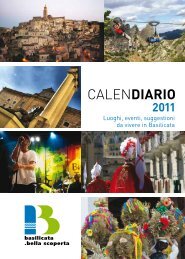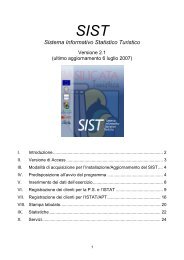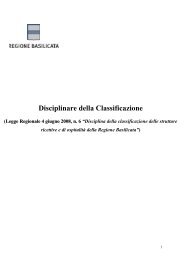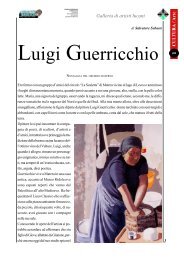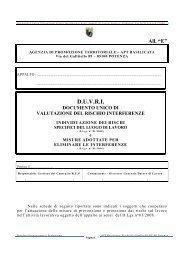Archeonaut - APT Basilicata
Archeonaut - APT Basilicata
Archeonaut - APT Basilicata
- No tags were found...
Create successful ePaper yourself
Turn your PDF publications into a flip-book with our unique Google optimized e-Paper software.
TheArchaeologicalArea and NationalMuseum inGrumentoLoc. San Marco e Contrada Spineta tel (+39) 0975 65074Opening times: Mon 2:00 - 8:00 pm; Tues-Sun 9:00 am - 8:00 pmClosed weekly: Monday morningsThe Archaeological Area andNational Museum in GrumentoWe are in the midst of one of the key wars during the rise of the power ofRome: the 2nd Punic war. The legendary Carthaginian general, Hannibal,commands his army against that of the Romans, under the leadership ofthe consul, Claudius Nero. The year is 207 BC and Rome is victorious.The battle field: the plain of the flourishing city of Grumentum. So historywas written, in this place in <strong>Basilicata</strong> marked by the course of the Agri,which became part of a Roman federal prefecture, established in the3rd century BC from an original Lucanian settlement upon which theRoman one was established.It is possible to discern the structure of the urban plan of ancient RomanGrumentum (which then became Saponara, and is known today asGrumento Nova) by entering the archaeological park and walkingalong the Cardo, its main street, which today like then crosses the cityfrom north to south, towards the forum. This was the beating heartof Grumentum’s daily life, marked by lights and shadows, the stage ofbattles and wars (it was almost razed to the ground during the SocialWar, in the 1st century BC and later despoiled by the gladiators who roseup to follow Spartacus between 73 and 71 BC).Between the dignified leisure of the baths, the spectacles in theamphitheatre, matters of administrative affairs and religious ceremonies,life went on peacefully in this populous colony, which lasted until the 6thcentury AD. The cult of Augustus, the Roman emperor par excellence,who was divinised immediately after his death (in 14 AD) thrived by thefirelight of lamps in the Augusteum, just as in the Capitolium Jupiter,Juno and Minerva, or the “Capitoline triad” were venerated. Mitra, thePersian divinity, whose cult spread throughout Italy during the imperialera, was also adored in Grumentum. The goddess is mentioned in anepigraph by a certain Titus Flavius Saturnius, who lived between the 2ndand 3rd century AD, that was discovered among the remains of the cityand is now preserved in the museum. The goddess Mephitis was alsovenerated in Grumentum, a legacy of the presence of the Lucanians, whorecognised this divinity as the protectress of harvests, crops, flocks andthe hearth, and also invoked her aid during the passage from life todeath.Imperial urbanbathsmarble statueof a nymph67



